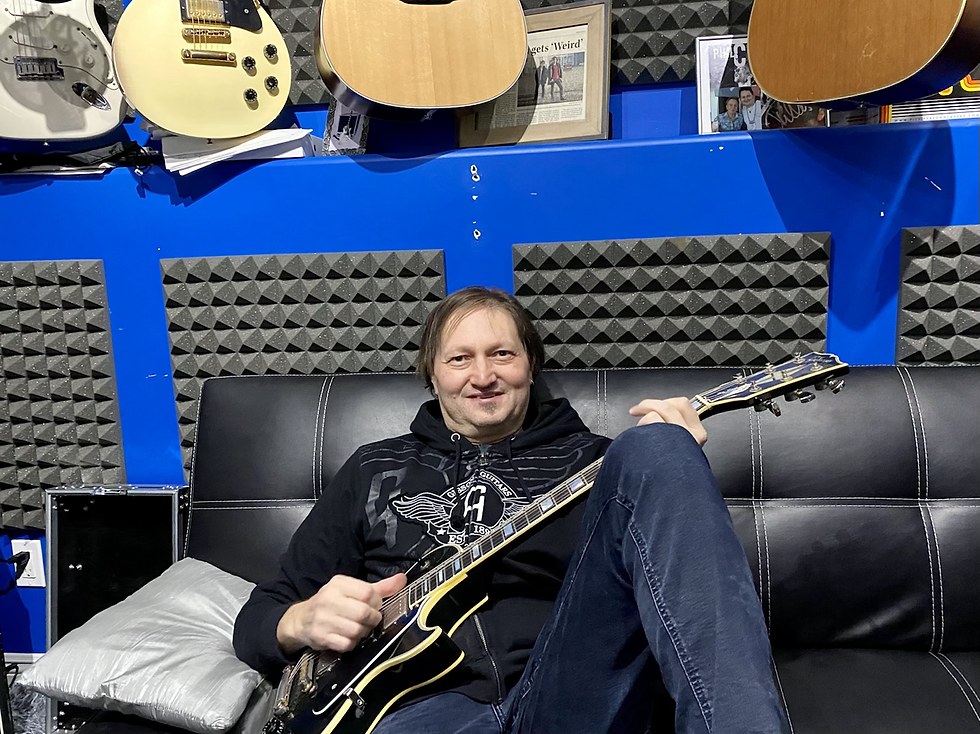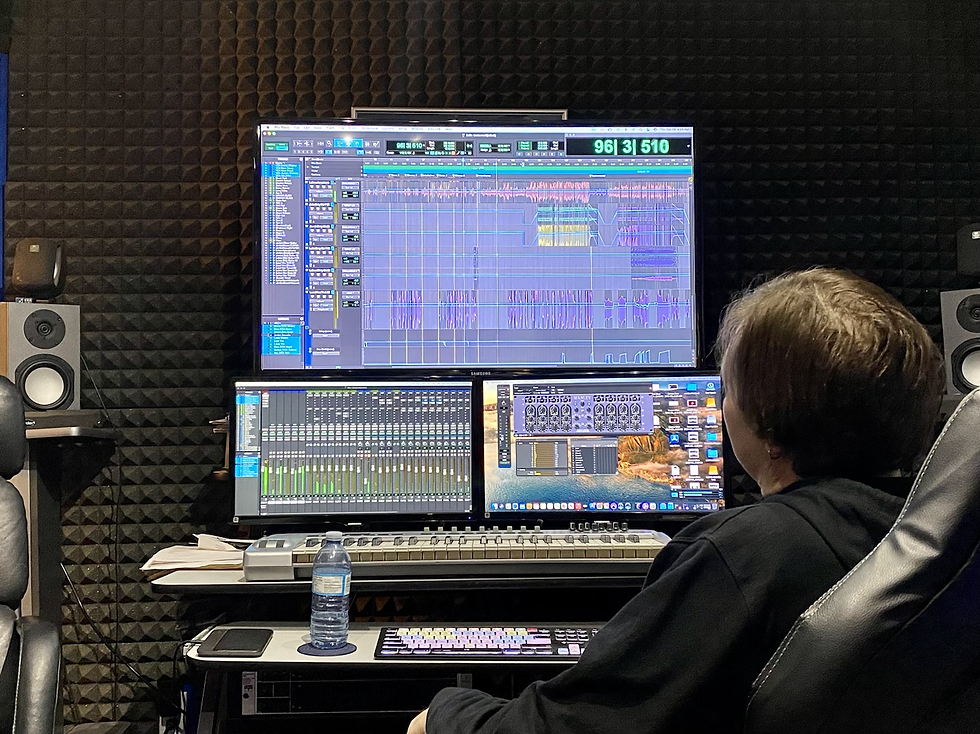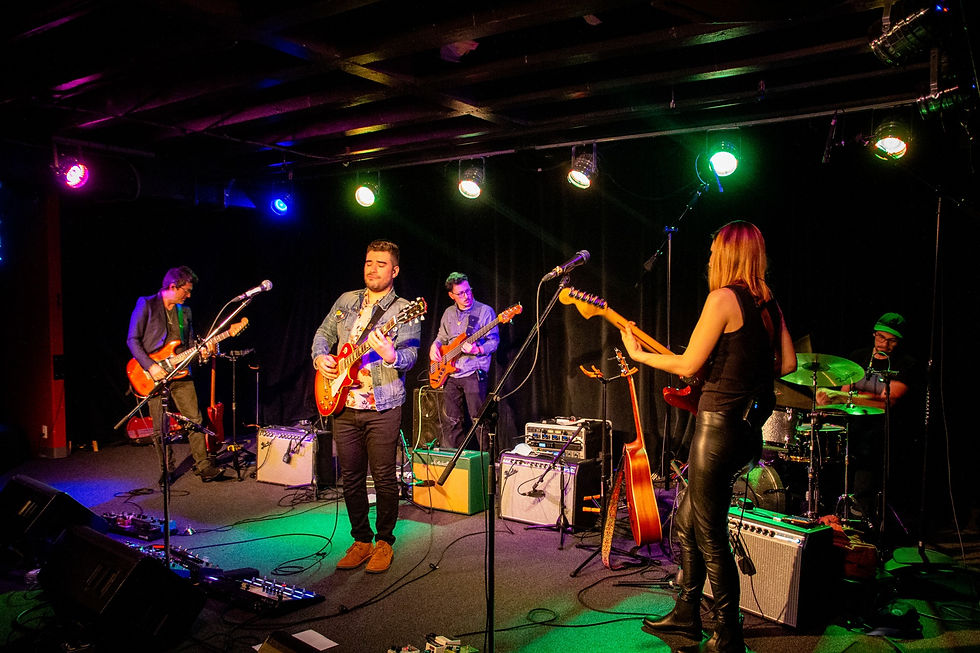Recording and Releasing a Single: A How-To With Blue Walls Studio
- William Yannacoulias

- Nov 1, 2021
- 4 min read
By Will Yannacoulias

Independent recording artists are in the midst of a music production revolution. The luxury of recording on a whim in a home studio was once a decadence afforded to only the most opulent of rock stars, but all that’s changed. The rise of studio software such as Garageband, Audacity and Pro Tools and the proliferation of affordable, simple hobby level hardware by companies such as IK Multimedia and Focusrite has changed that. Increasingly artists are recording music themselves and converting storage rooms and spare bedrooms into recording studios to record friends. Prince Albert songwriter and solo artist Gary O is a perfect example; the Gary O Xperiment recently released a pair of singles recorded at Blue Walls Studio, Gary O’s production business. Gary O patiently explained to NSMZ the process of self-recording and independently distributing music.
“The process changes from artist to artist” Gary explained, “but for this example we’ll do a basic rock song. Generally the first step is to work on your arrangement to make sure you have a strong song, and create a scratch track with just maybe a vocal and an acoustic guitar or piano.” The scratch track is the foundation upon which artists can record individual tracks on top of, intended to be used as a guideline then discarded or ‘scratched’ once no longer needed. “From there I like to track drums and bass” Gary O elaborated. “Modern recording has become a lot of editing; you record the drums then edit them, making sure they’re in perfect time. Perfect, but not just quantizing everything on a grid like a drum machine; there’s an artform to get it so it’s in time but there’s still a natural human feeling. That’s taken me quite a while to figure it out, and to be honest I’m still figuring it out. That’s the key to really good editing, being able to make everything be in time but not on a grid, just a little behind or ahead of the beat.”

Once the rhythm section is recorded and the tracks have been edited for timing, the foundation is in place to record guitars. From traditional to modern, Gary O explained that “there’s many ways to do guitars, you can put a mic in front of an amp or there’s lots of cool modeling units. They take care of all the details of microphone placement and speaker cabinet selection, you can choose anything you want. It makes things flexible for getting any kind of guitar tone you want and it’s faster; you can lose hours digging through actual microphones, selecting cabinets, speakers, experimenting with mic placement. I usually employ digital modeling units but sometimes nothing beats the sound of air pushing through a speaker.”
Humans subconsciously read into voices and listen for all sorts of subtle information, which means even the most casual music listener listens to vocals with scrutiny. For this reason Gary O enjoys the challenge of recording and editing vocals, and shared a valuable tip. “Once you get the instruments tracked you get into the vocals. Depending on the vocalist and their skill level I like to double track vocals” he disclosed. “They’ll sing it, and I’ll edit it for timing and tuning; not just with autotune but manually, organically. Then I’ll have them double their part and leave it unedited; having that second track very slightly out of time or tune can create a nice subtle chorus effect.

The mix is the next stage in the process, where the engineer sets the levels of the individual tracks, pans them in stereo, and adds effects. Like a potter on a wheel, the mix allows the engineer to take the raw tracks and shape them into a song. Gary O has singled out mixing as the most rewarding and creative part of the process, noting that “sometimes you can completely reshape a song, a track or a single sound in the editing process using EQs, compressors, reverbs, delays. When you’re recording on a digital platform there’s so many plugins to choose from, it gives you so much flexibility. If you wanted to emulate the sound of an SSL4000 console you could, without having to go out and buy a $150,000 piece of hardware.”
“Once the mix is something you’re happy with” Gary O explained, “the next step is to have it mastered.” Mastering is like saying ‘bless you’ after a sneeze; everyone does it but few can explain exactly why. Gary shone a little light on the mystery. “Is it witchcraft or magic?” he laughed. “During mastering they basically compress the song; if they didn’t do that, on the radio it would be so slammed there would be absolutely zero dynamic to it. They put that shiny gloss, add a little more high end on the EQ. An engineer will run the WAV file through a compressor, EQ and limiter, both hardware and software, smooth out all the peaks. There are much more affordable online services like LANDR that you can send them a song and they master it but it’s done to presets, formulaic. An actual engineer like MCC Recording Studio in Calgary will master for the band AND for the song. He’s not just going to add effects, he’s actually listening for shortcomings and trying to compensate.”
The final step is to take the mixed mastered files and upload them to a distribution company for streaming, CD or vinyl pressing. “I’ve worked with CD Baby in the past” Gary suggested, “but there’s lots of them. These companies will get your stuff on every streaming service possible, and will press, package and ship compact discs as well.”
From arranging a song idea to holding a copy of your debut album, Gary O at Blue Walls Studio was happy to guide our readers through the process here and would be happy to help any interested artists in person. He can be reached at 306-961-0569






Comments